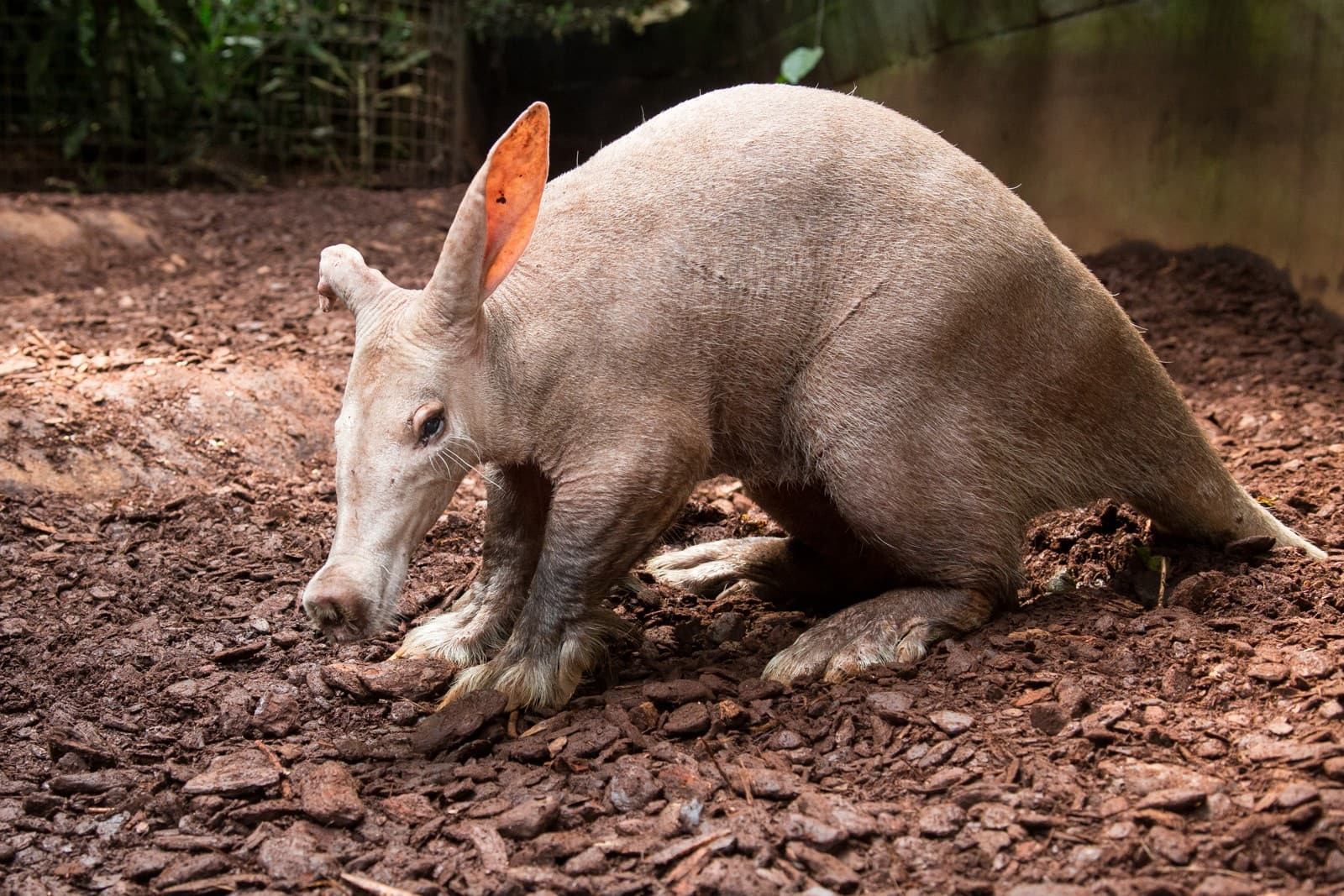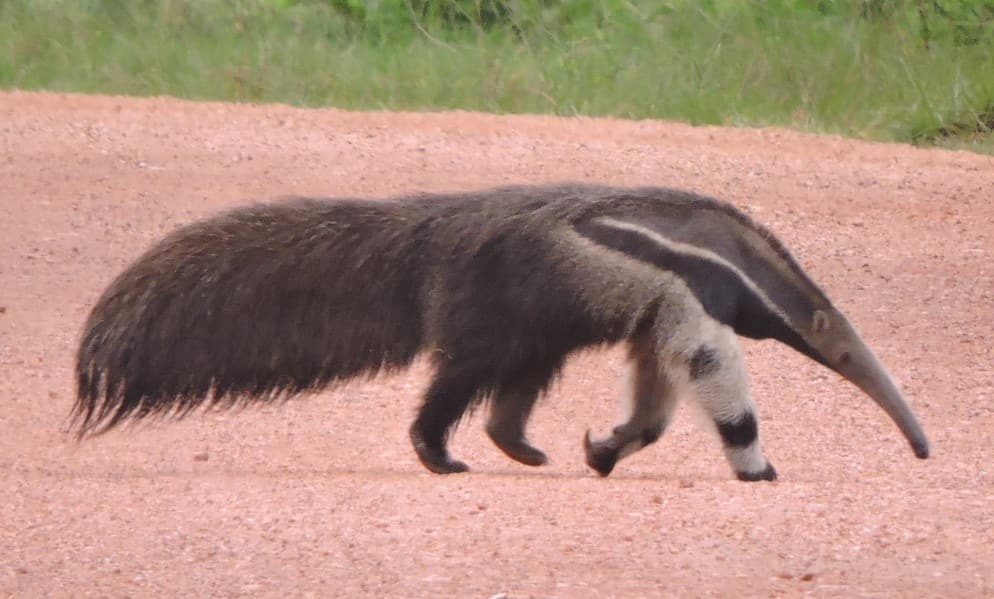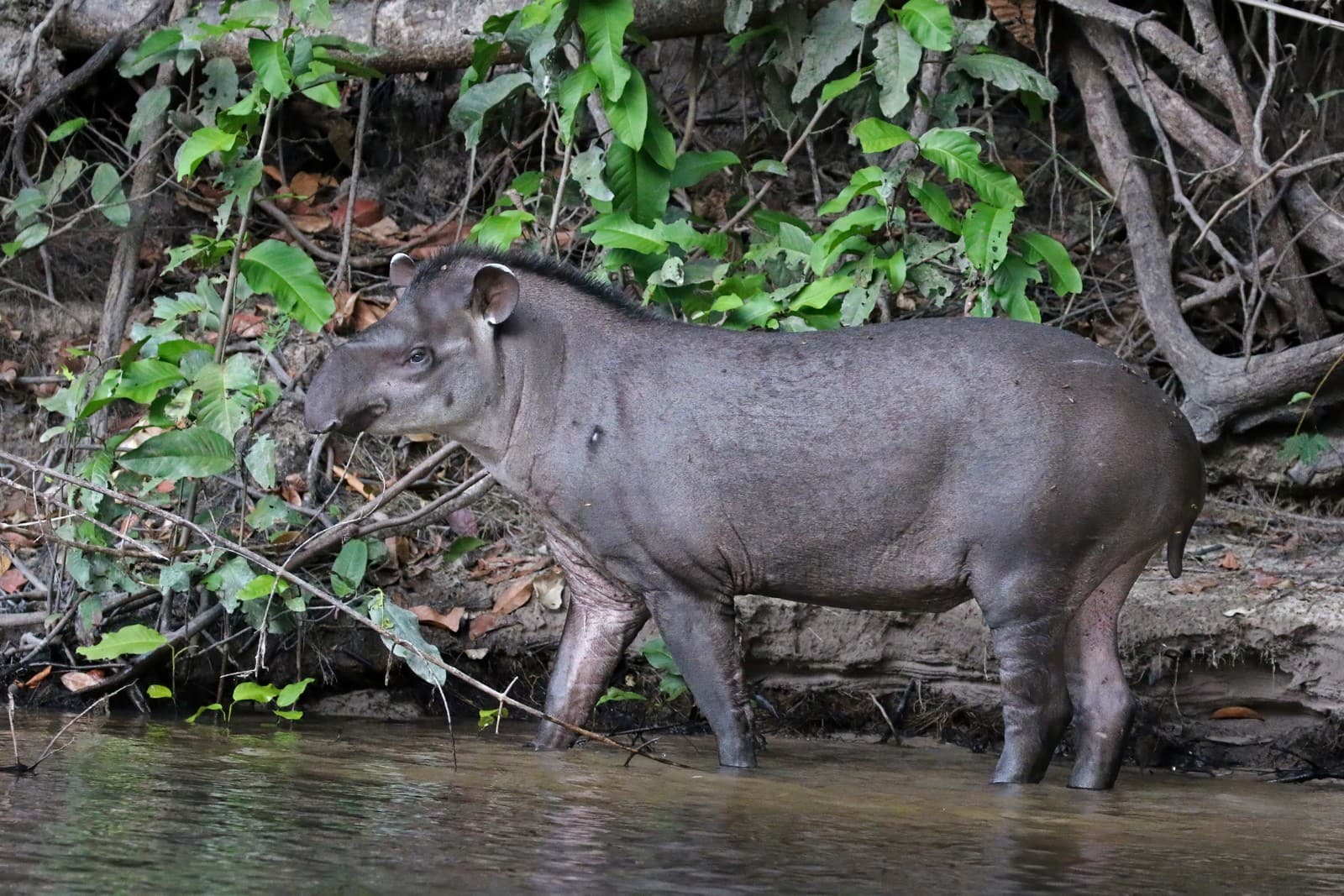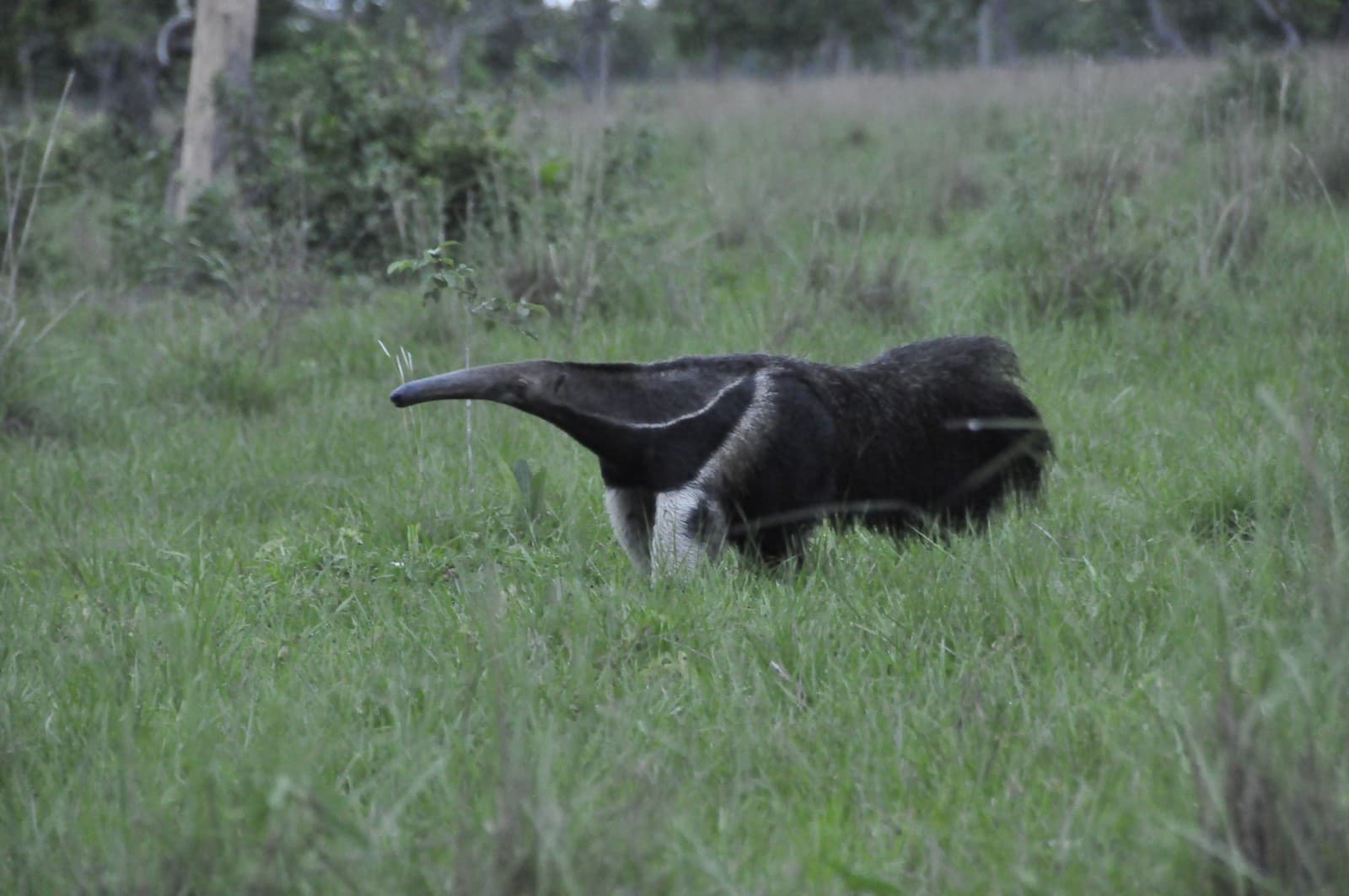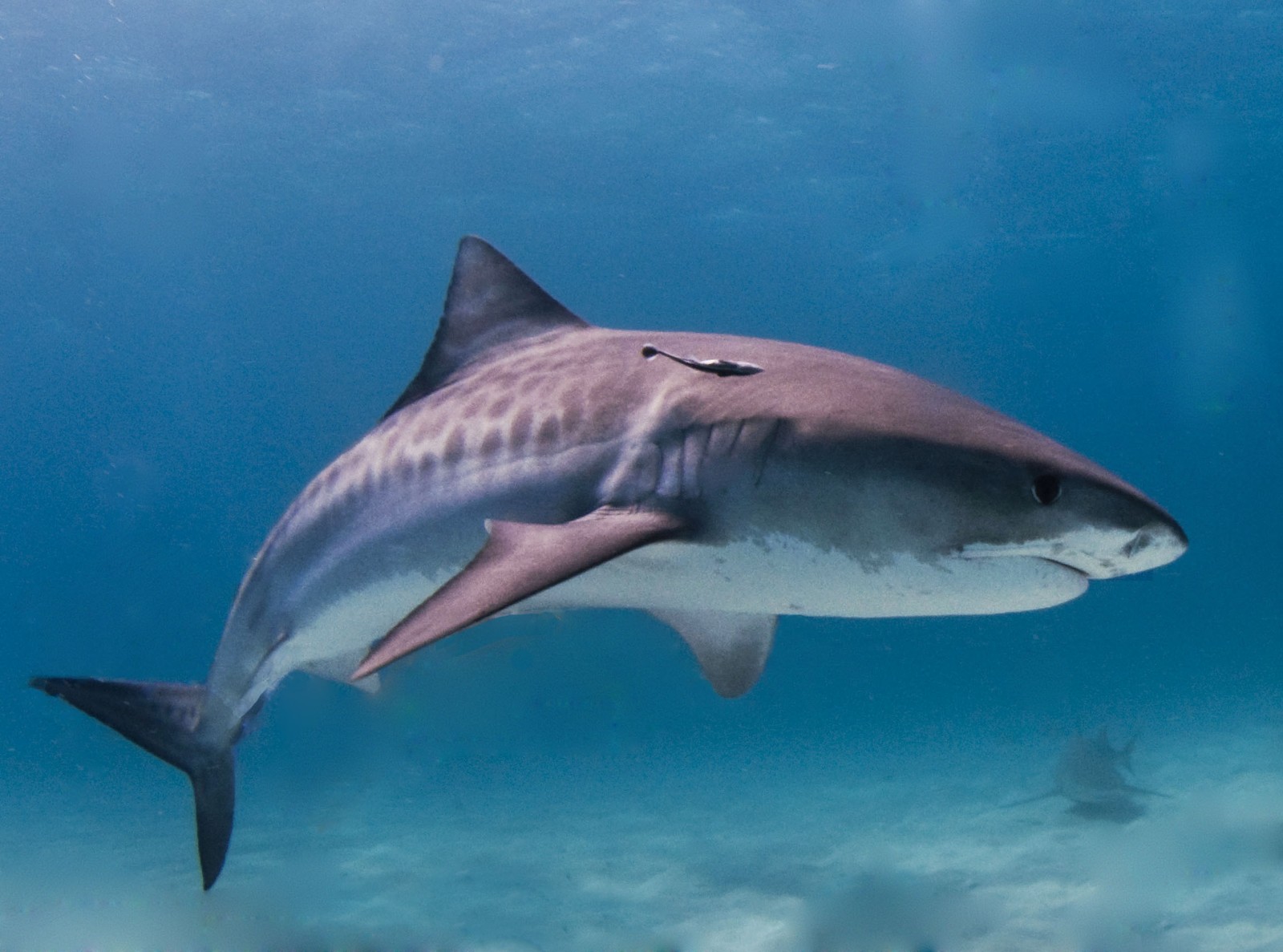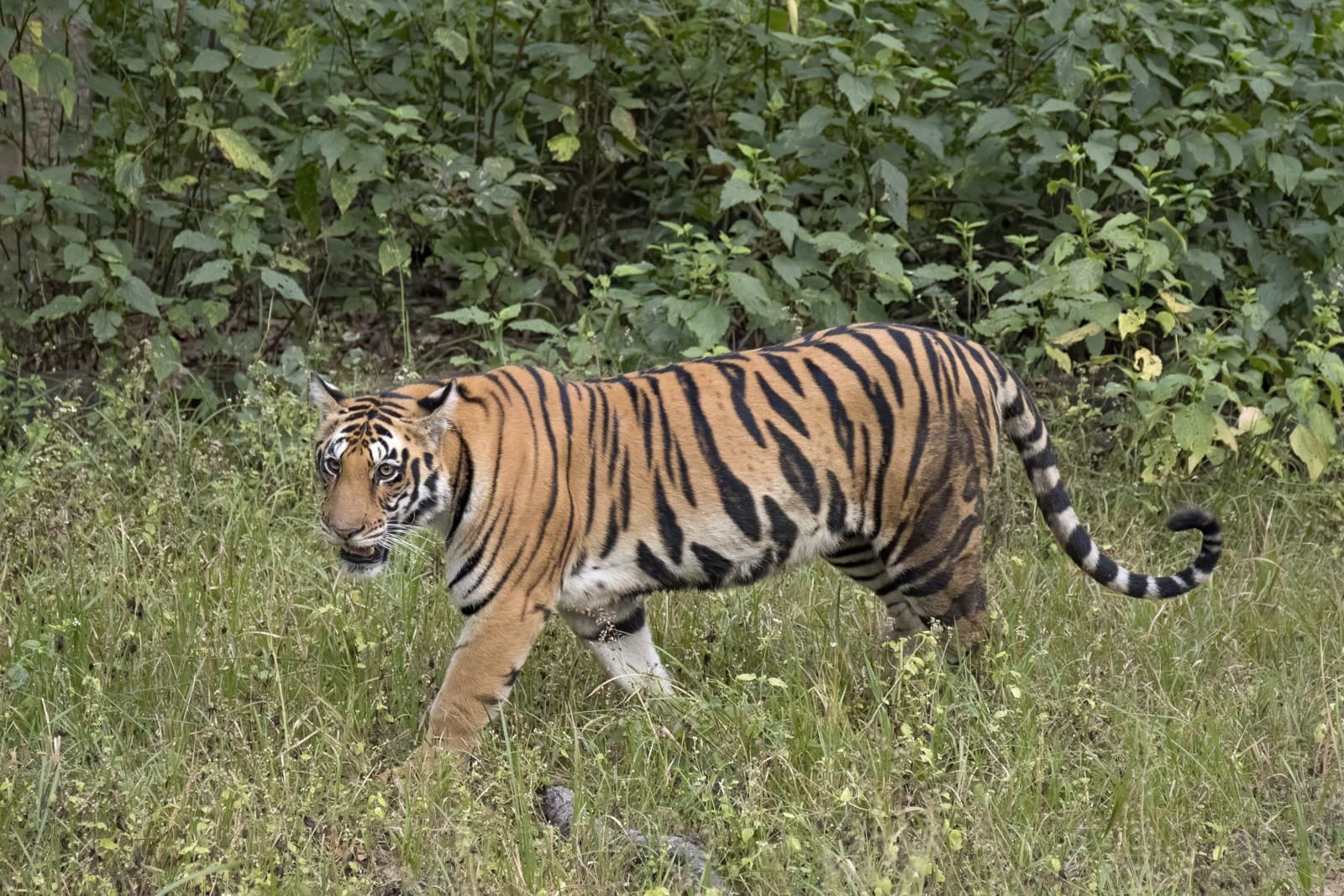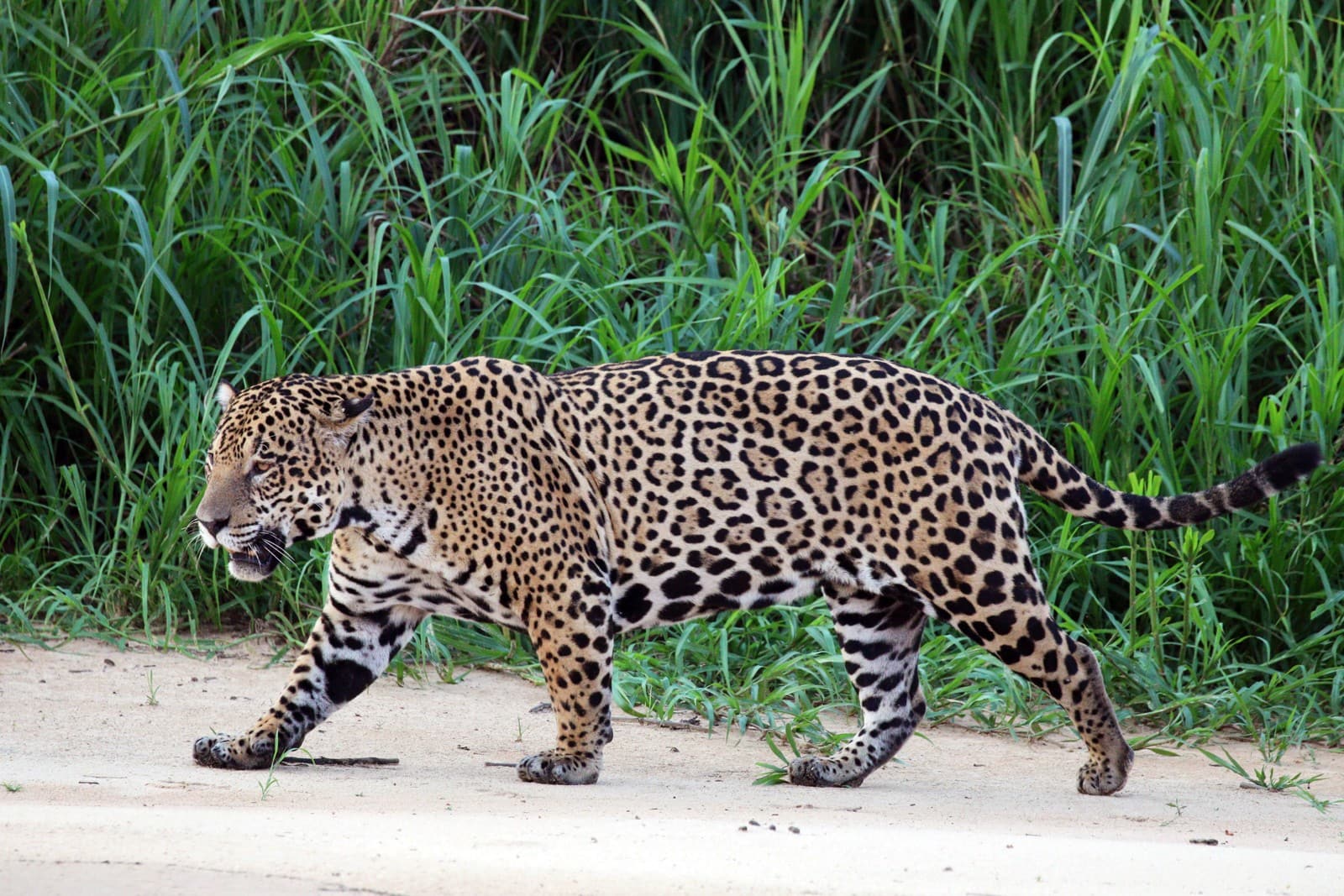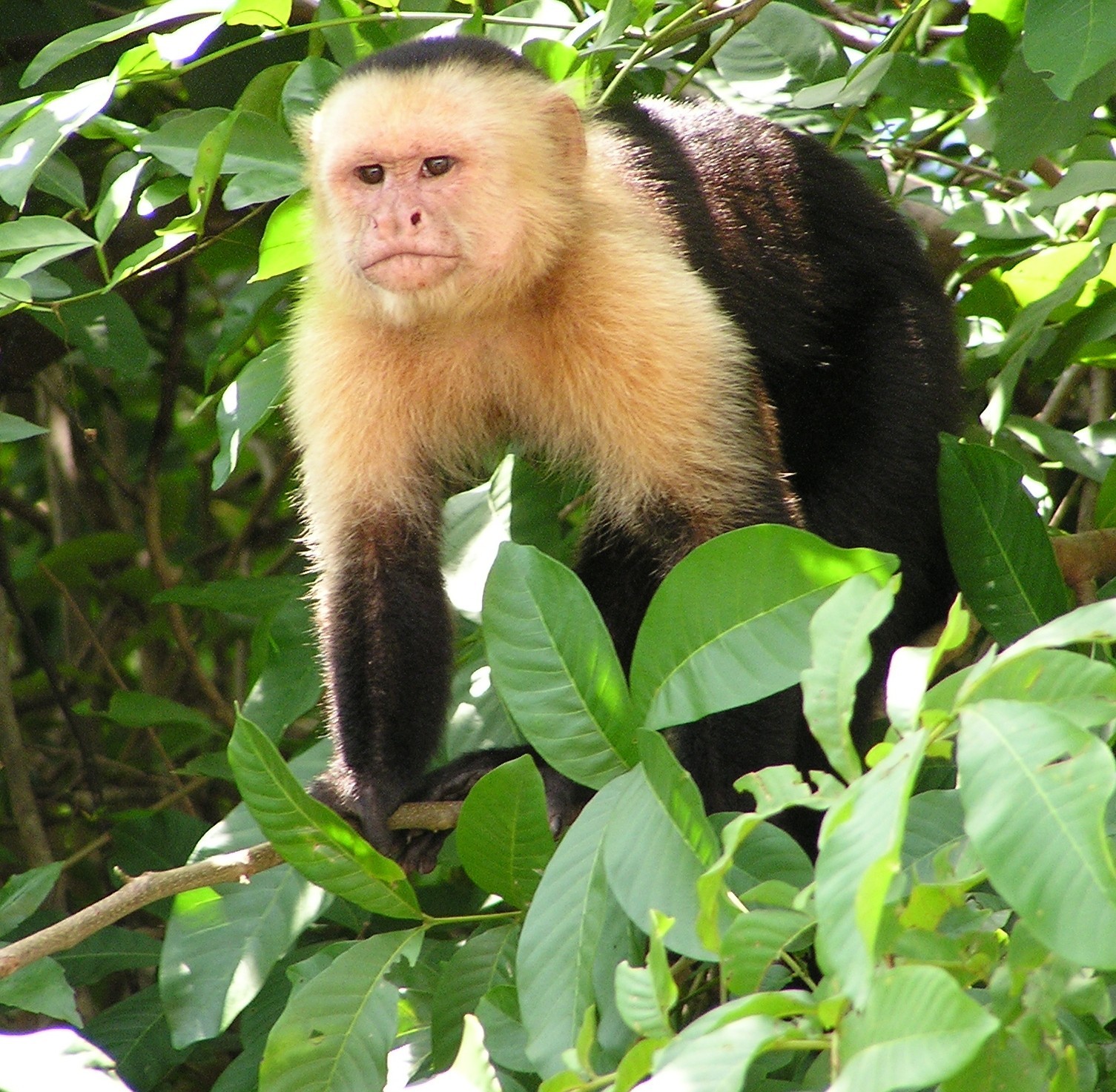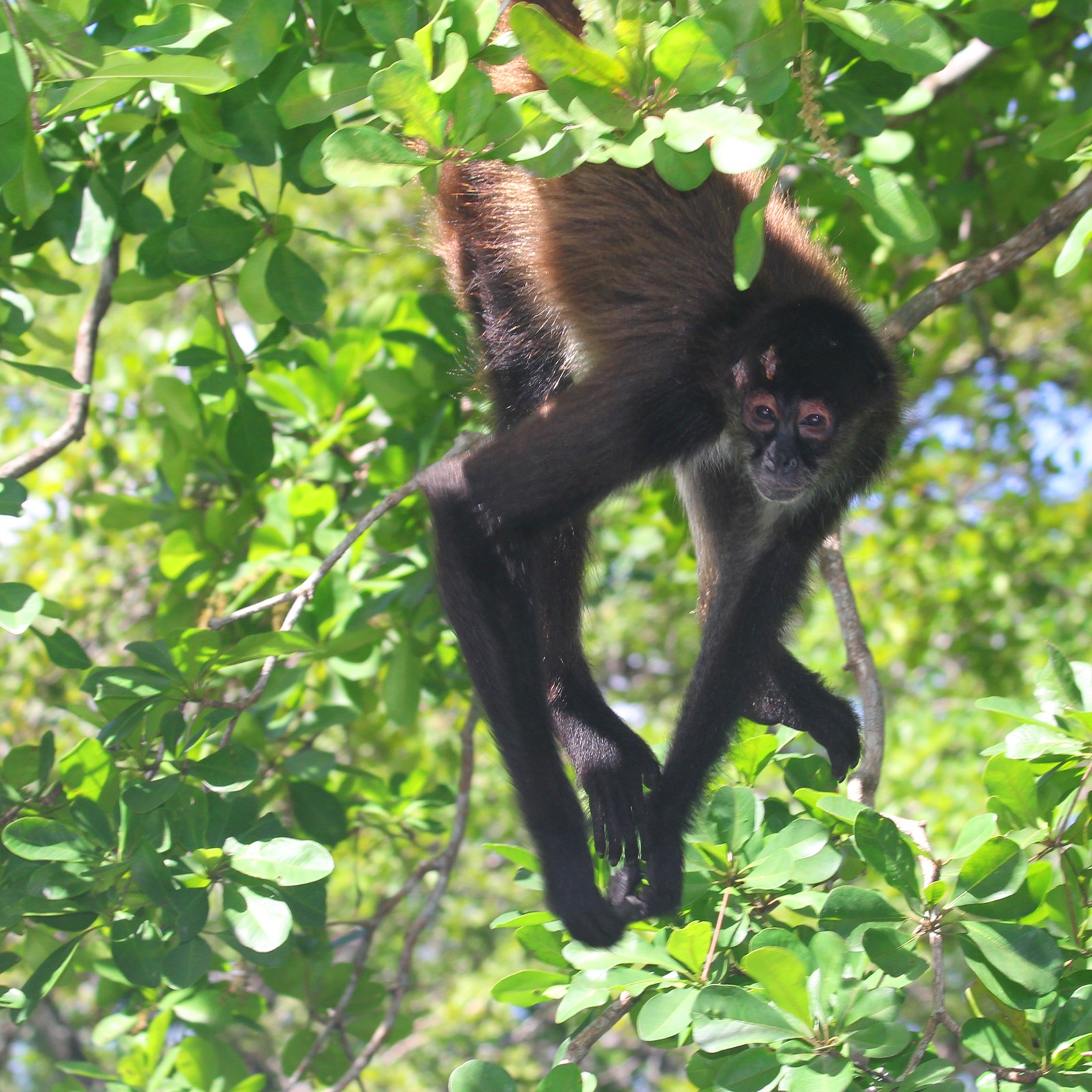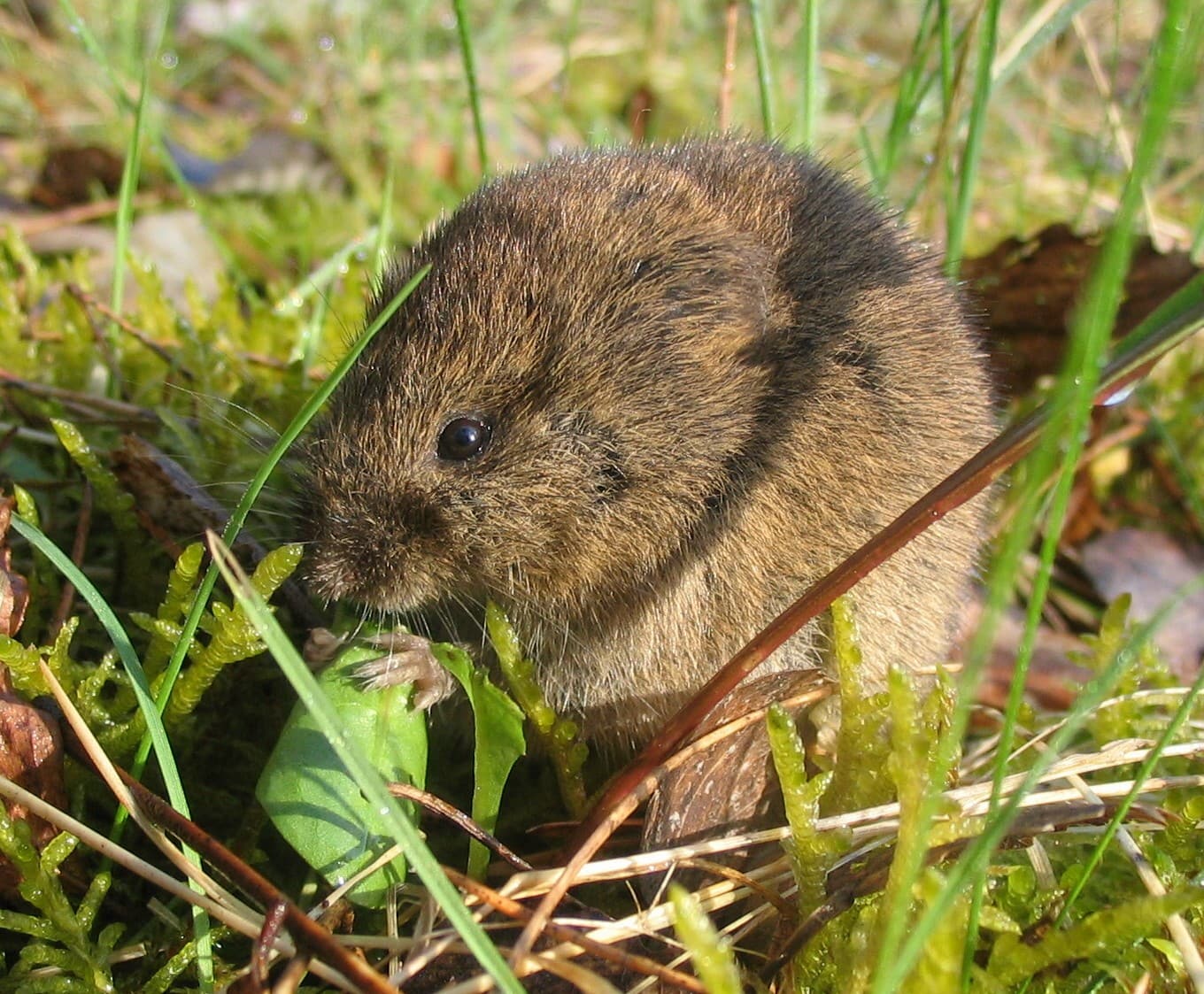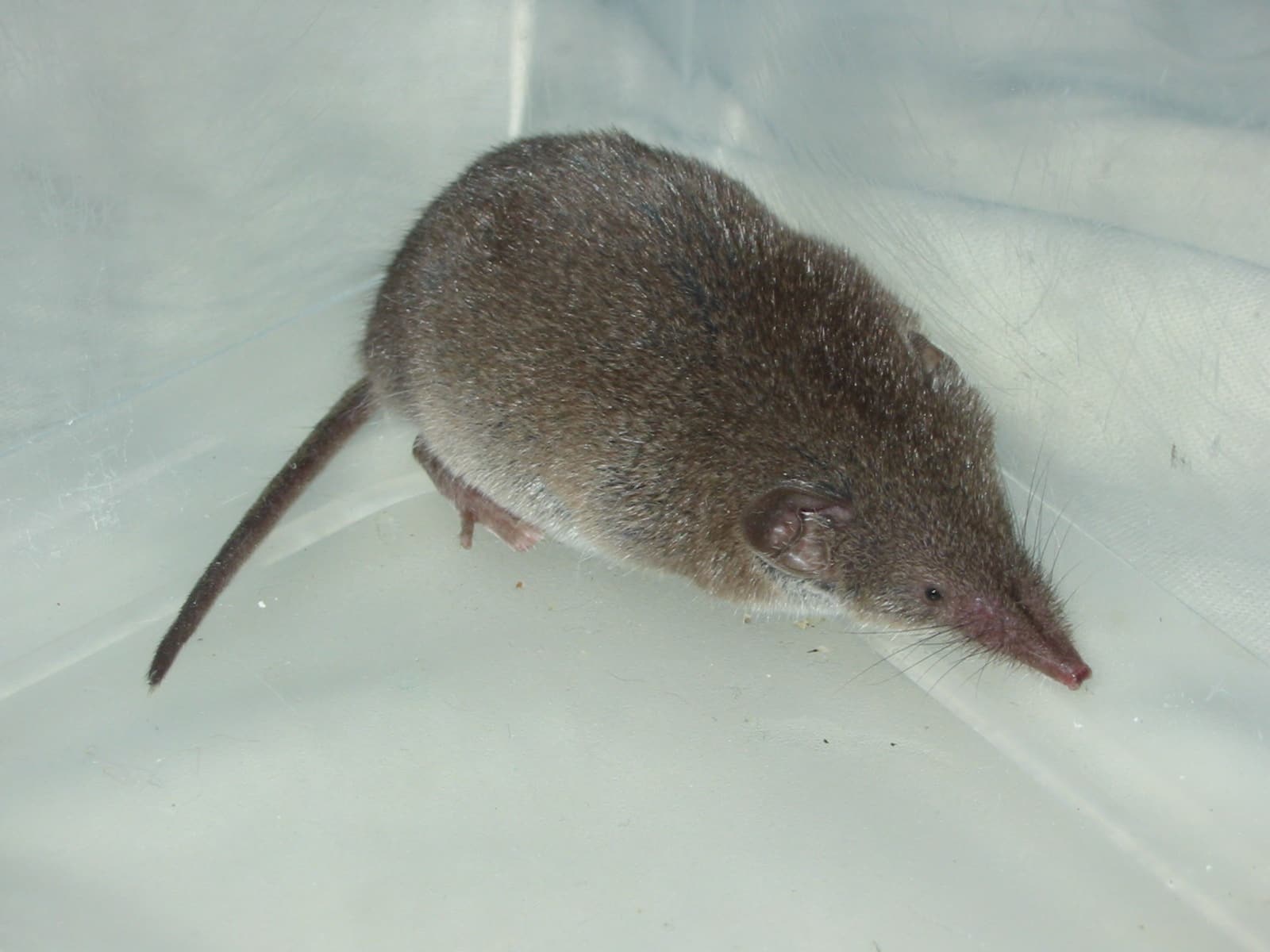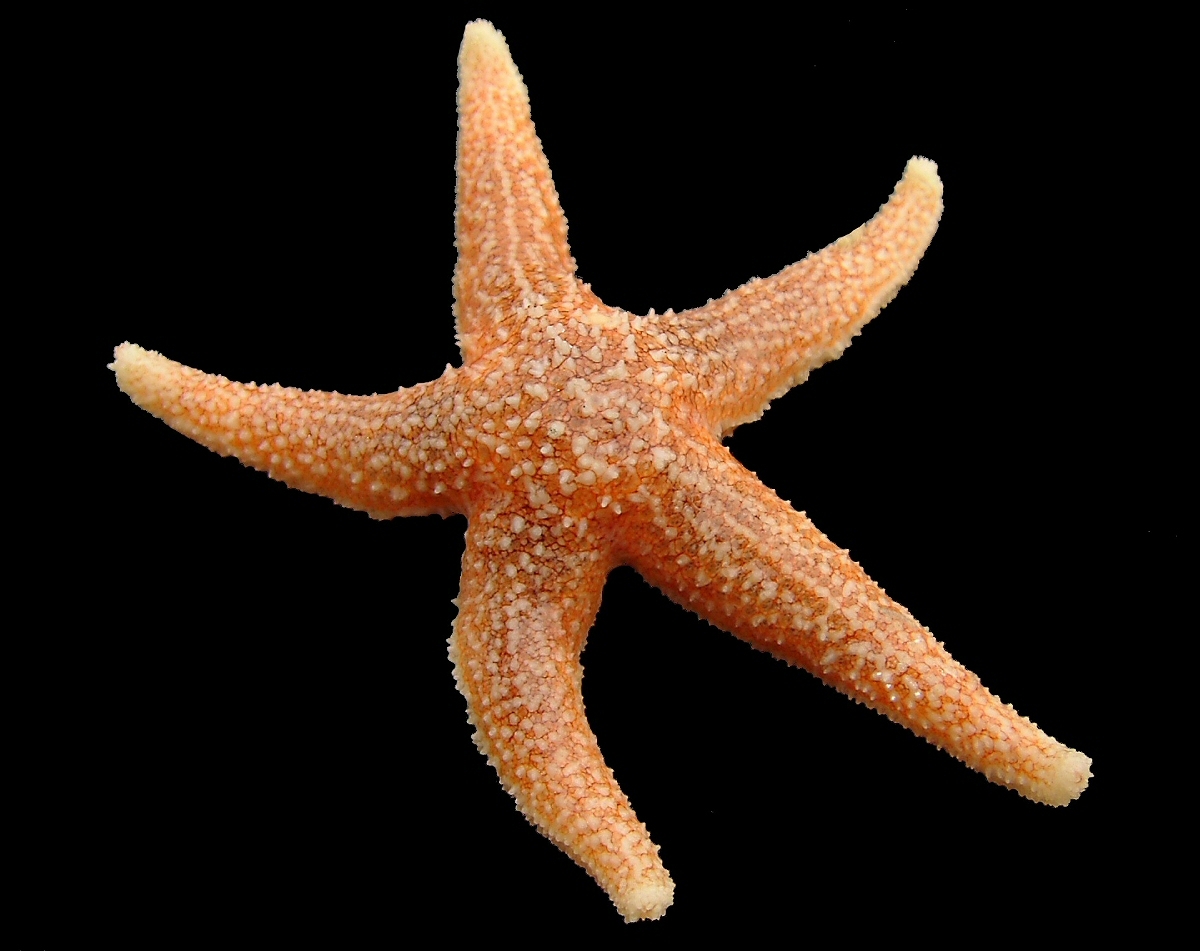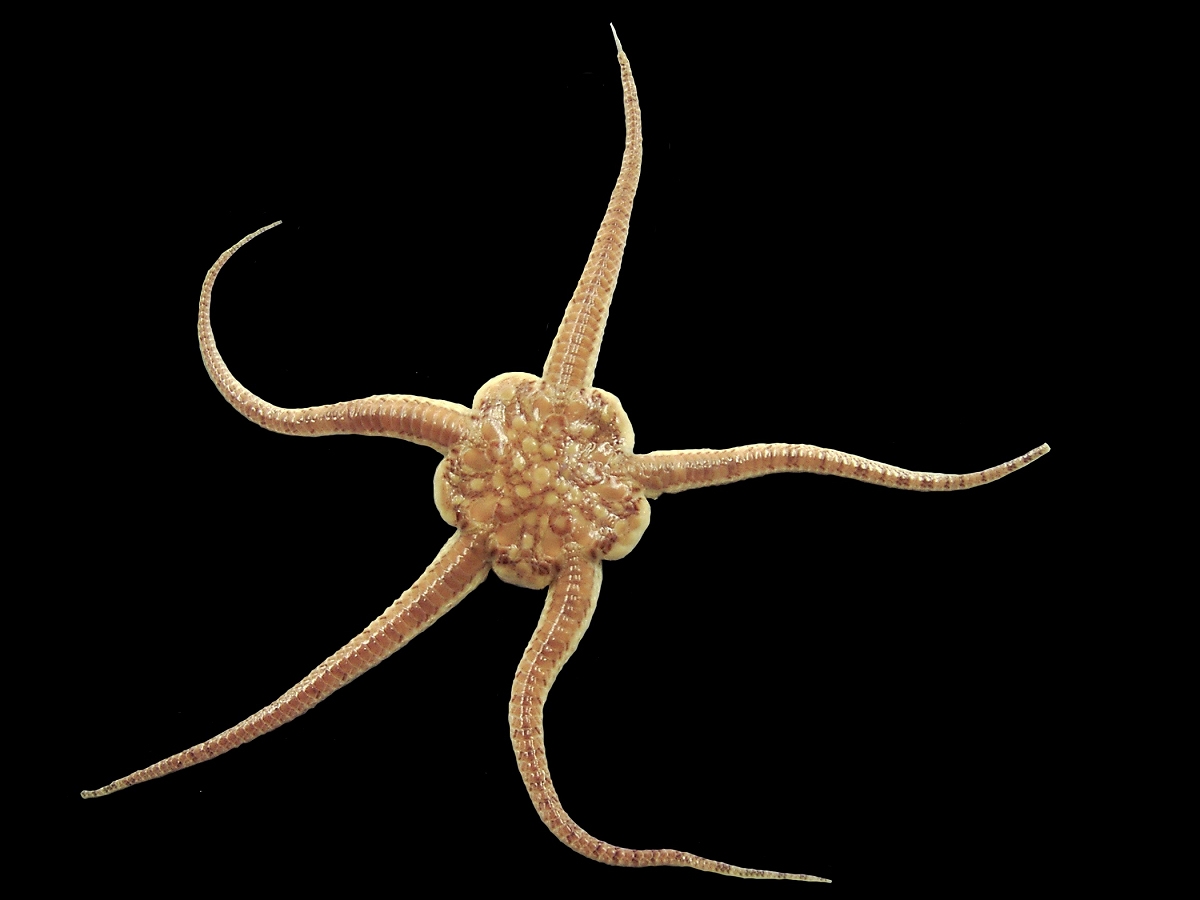Numbat vs Anteater: A Complete Comparison
While both Numbats and Anteaters are specialized insectivores, these remarkable creatures couldn’t be more different in their evolutionary history and characteristics. The Numbat, weighing just 1.3 pounds (600g), represents Australia’s unique marsupial lineage, while the Giant Anteater of South America can reach up to 140 pounds (63.5kg) and belongs to the placental mammal family.
These fascinating insect-hunters have evolved similar feeding strategies despite being separated by millions of years of evolution and thousands of miles. However, their hunting techniques, physical adaptations, and daily routines reveal striking contrasts that showcase nature’s diverse approaches to similar ecological niches.
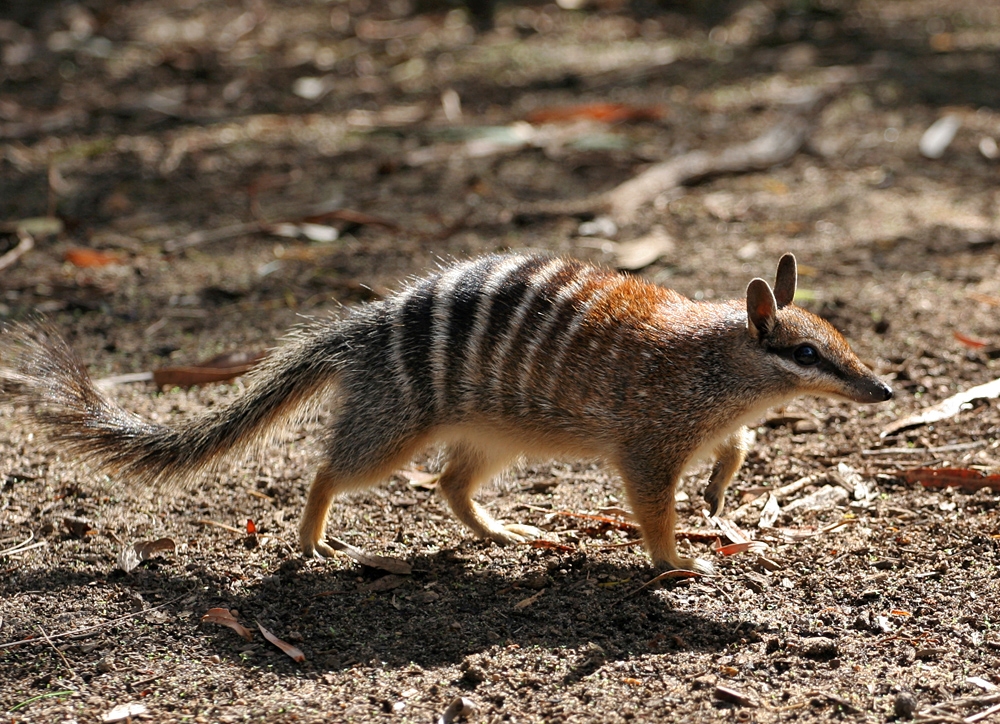
© Martybugs at English Wikipedia / CC BY 3.0
The Numbat, Australia’s striped insectivore specialist, displays its distinctive banded pattern while searching for termites in its native woodland habitat. This small marsupial’s specialized snout and long tongue are perfectly adapted for extracting termites from their underground chambers.
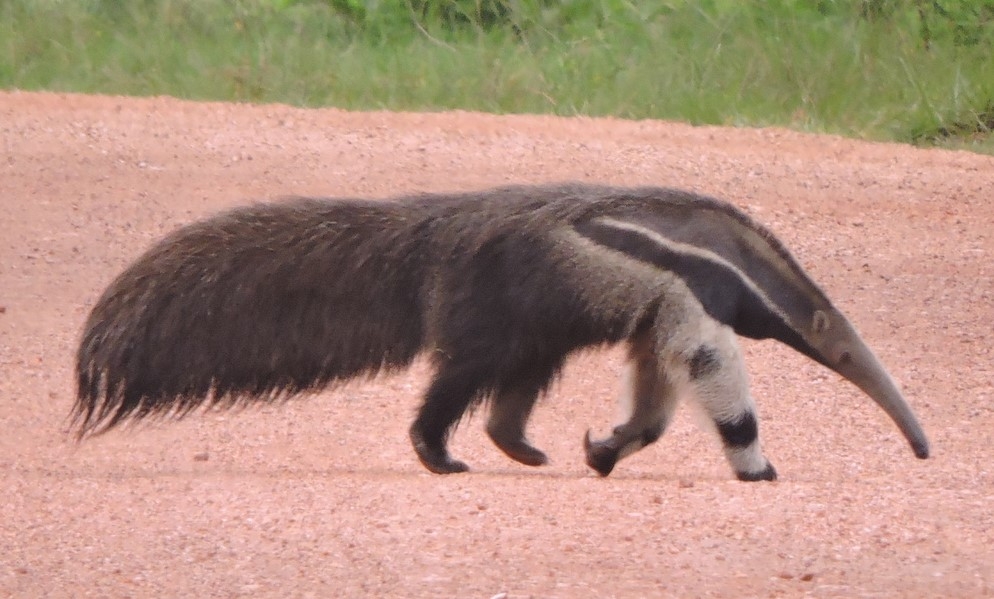
© Larissa Vaccarini Ávila / CC BY 4.0
The Giant Anteater demonstrates its impressive size and distinctive features while patrolling its territory. Note the characteristic elongated snout, powerful forearms, and thick, bushy tail that serves as both balance and shelter during rest.
Key Differences Between Numbats and Anteaters
| Feature | Numbat | Giant Anteater |
|---|---|---|
| Size | 10 inches (25cm) body length | Up to 7 feet (2.1m) including tail |
| Weight | 1.3 pounds (600g) | Up to 140 pounds (63.5kg) |
| Diet | Exclusively termites | Ants and termites |
| Daily Food Intake | 20,000 termites | Up to 35,000 ants/termites |
| Habitat | Australian woodlands | South American grasslands/forests |
| Classification | Marsupial | Placental mammal |
Hunting and Feeding Behavior
The Numbat and Anteater showcase remarkably different hunting strategies despite their similar dietary preferences. Numbats are diurnal hunters, using their keen eyesight to locate termite colonies during daylight hours. Their specialized tongue extends to 4 inches (10cm) and captures up to 20,000 termites daily.
Giant Anteaters, conversely, are primarily nocturnal or crepuscular, relying on their powerful sense of smell to locate ant colonies. Their tongues can extend an impressive 24 inches (61cm) and collect up to 35,000 insects in a single day.
Habitat and Distribution
Numbats historically ranged across southern Australia but are now restricted to small pockets of woodland in Western Australia. These specialized marsupials require specific habitat conditions, including abundant termite colonies and hollow logs for shelter.
Giant Anteaters demonstrate greater habitat flexibility, occurring across various South American ecosystems from grasslands to rainforests. Their range extends from Honduras to northern Argentina, showcasing their adaptability to different environments.
Survival Adaptations
Defensive Strategies
Numbats rely primarily on vigilance and speed to escape predators, with their striped pattern providing camouflage in dappled woodland light. Their small size allows them to quickly seek refuge in hollow logs and burrows.
Giant Anteaters employ more formidable defensive tactics, using their powerful forearms and sharp claws to deter predators. When threatened, they can rear up on their hind legs and deliver potentially lethal blows to even large predators like jaguars.
Physical Adaptations
Both species exhibit remarkable tongue adaptations, but their approaches differ significantly. The Numbat’s shorter tongue is perfectly suited for extracting termites from shallow galleries, while the Giant Anteater’s exceptionally long tongue allows it to breach deeper into ant colonies.
Conservation Status and Threats
Numbats face critical endangerment, with fewer than 1,000 individuals remaining in the wild. Habitat loss, feral cat predation, and altered fire regimes threaten their survival. Intensive conservation efforts, including captive breeding programs, are crucial for their preservation.
Giant Anteaters, while more numerous, face increasing pressure from habitat destruction and road mortality. Listed as vulnerable by the IUCN, their population trends highlight the importance of habitat conservation across South America.
Who Would Win in a Confrontation?
While such encounters would never occur naturally, comparing defensive capabilities reveals the Giant Anteater’s significant advantages in size and strength. Their powerful forearms and claws, capable of deterring large predators, far exceed the Numbat’s defensive adaptations. However, such comparisons overlook these species’ remarkable specializations for their distinct ecological roles.
This analysis demonstrates how convergent evolution has produced fascinating solutions to similar dietary challenges while maintaining distinct characteristics shaped by their respective environments and evolutionary histories.
